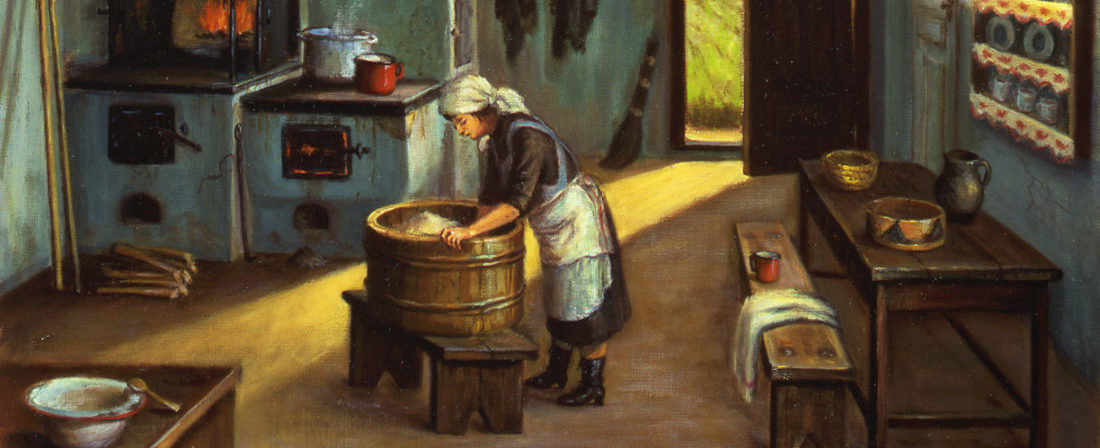Educational Restitution: Words of Introduction
A Confluence of Two Projects: Film plus Educational Resources
The Judaic Studies Program at Drexel University presents an educational website that explores ways of studying about cultures that have been decimated by genocide. The website Alive is the confluence of a film project on the life and art of Holocaust survivor Toby Knobel Fluek, Toby’s Sunshine, and a research and study program that searched to find a framework for keeping alive the way of life destroyed by genocide. We were involved in the film project from December 2001 through May 2008. Both parts of the work were planned and directed by Rakhmiel Peltz, Professor of Sociolinguistics and Founding Director of the Judaic Studies Program, and coordinated administratively by Kathleen Carll, Associate Director of Judaic Studies.
Teaching about Life Before Genocide
We have been working on the educational project from the summer of 2009 until summer 2018. Rakhmiel Peltz, a lifelong student of Yiddish, was motivated for many years to research and teach about Yiddish language and culture, but had not realized that the ever-present influence of the destruction of the homeland of Yiddish during the Holocaust had rendered efforts of education futile and demanded a deeper look. The outcome of the film project he directed on the art and life of Holocaust survivor Toby Knobel Fluek, whose art focused on the way of life annihilated during the Holocaust, convinced him that a project that defined educational restitution after genocide would aid in presenting the Yiddish world of eastern Europe to new generations of Jews and benefit the entire world by providing for the continuity of a language and culture.
The Difficulty in Transmitting the Culture That Was Victimized
During interviews of Holocaust survivors about their life growing up before World War II, Rakhmiel found that it was far easier for the survivors to talk about their suffering during the war than about their experiences growing up with their loved ones whom they lost. On some level, people who have been deemed worthy of extinction internalize a feeling of lack of self-worth and lack of value of their culture that thrived before the destruction. Surviving members of the targeted group and the world at large have shown little interest in the cultural worlds that have been decimated. The extensive efforts involved in Holocaust education have documented and taught the history of the rise of the Nazi totalitarian state and its war against the Jews. Holocaust educational work operates with the conviction that such knowledge will help prevent future genocides. Relatively few resources have been expended to restore avenues for transmitting the culture that was victimized to surviving group members and their descendants.
Restorative Justice and Giving Back to the Victim
As we started to study processes of restitution and reparation, we found that criminal justice is focused on perpetrators of crimes, not on giving back to the victim. We were attracted to the unique aspect of restorative justice that is concerned with restoring to the victim. When we did look toward the history of restitution and reparation, we discovered little emphasis on education and cultural transmission. Accordingly, we were encouraged that our project could fill a void that would encourage more activity in efforts to strengthen endangered languages and cultures, especially those at risk due to genocide.
Case Studies of Reconstructing History after Genocide
Rakhmiel Peltz, with the help of individual Drexel undergraduate research assistants and four classes that studied Reconstructing History after Genocide (2011-2018), searched for evidence from case studies in which members of groups that are victims of genocide have generated programs aimed at teaching about the society and culture that was destroyed. We found very little and have, therefore, attempted ourselves to set the framework for future efforts. We present the work of many people on this website and will acknowledge them in a later section.
This Website’s Audience
First and foremost, we are interested in helping Jews recover elements of their language and culture that were eradicated and dislocated during the Holocaust. All peoples traumatized by genocide lose the existing channels for cultural transmission and education within the family and the community. Our hope is that together with other attempts at this goal of educational and cultural restitution our website project will help to teach Yiddish and its east European cultural roots, and thus keep it alive from generation to generation.
We are, therefore, addressing all Jews, who are in this sense survivors of genocide. This includes Holocaust survivors themselves and their descendants.
We hope that our project will be useful in the efforts of other peoples who are victims of genocide to reconstruct their histories and transmit their cultures to future generations.
In the spirit of restorative justice, we are also addressing the perpetrators of the Holocaust and their descendants, the Germans and their collaborators in different societies of eastern Europe.
We are also addressing the non-Jewish neighbors and their descendants in eastern Europe, to help fill the void in their joint multi-cultural histories.
From the vantage of human cultural ecology and the fight to save endangered languages and cultures, we are addressing all of humanity, who are in this broad scheme also survivors of genocide and survivors of the Holocaust. It is vital for the entire world to keep Yiddish and its cultural world alive!

